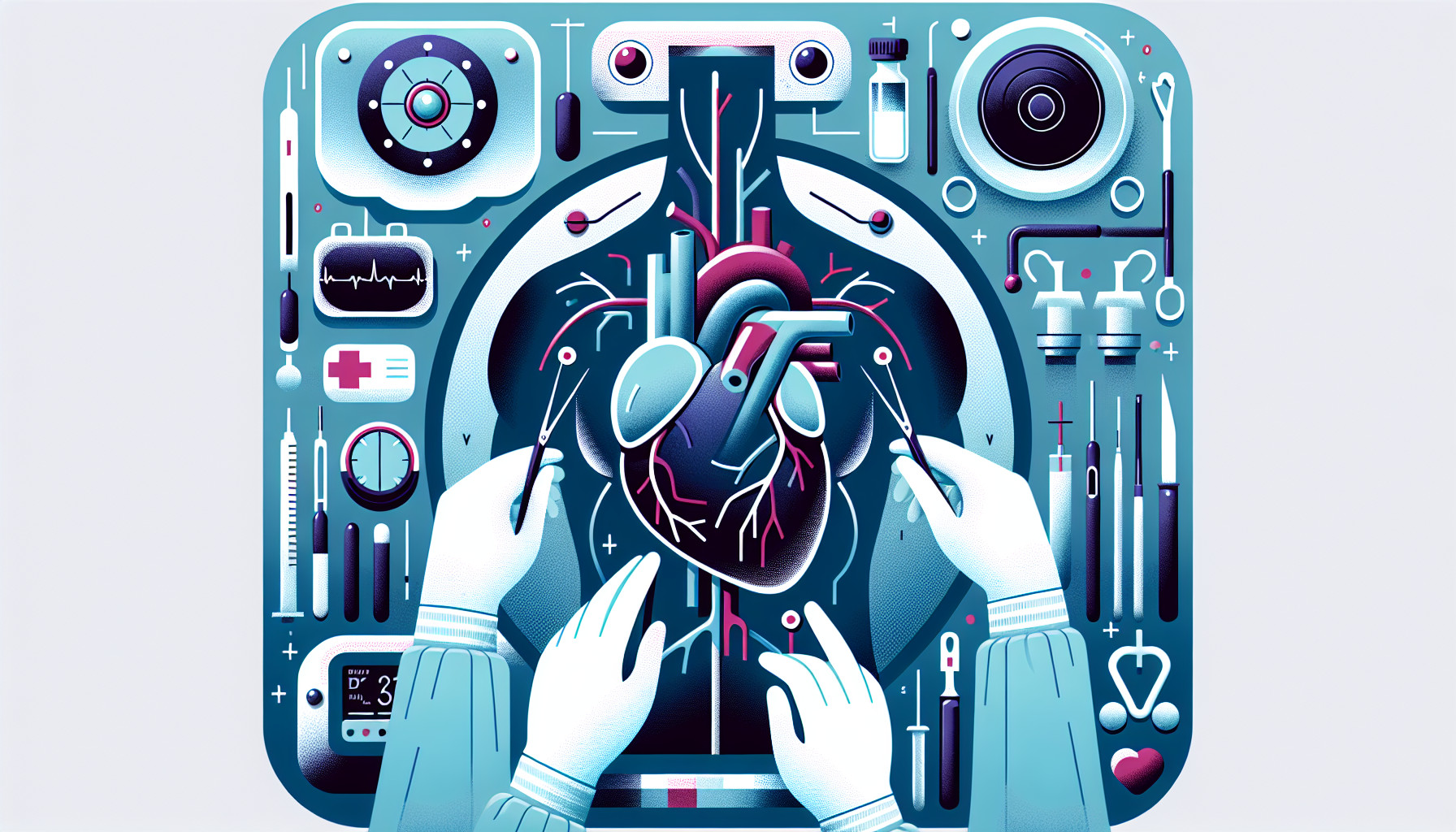Our Summary
This research paper discusses the issues with coronary artery bypass grafting (CABG), which is one of the most common surgeries performed worldwide. Despite advancements in medical technology, most CABG procedures are still as invasive as they were half a century ago. Unlike heart valve surgeries which have become less invasive, CABG still requires multiple surgical exposures, such as the need to expose each coronary artery to be grafted, making the procedure more complex and invasive. The authors argue that the traditional CABG method is overly invasive, can lead to complications, and requires a long recovery period. They suggest that less invasive methods of CABG, some of which they describe in the paper, are safer, more practical, and easier to adopt. They believe that medical centers specializing in coronary artery surgery should invest resources and expertise in developing these less invasive techniques for CABG.
FAQs
- What are the issues with traditional coronary artery bypass grafting (CABG) methods?
- How do less invasive methods of CABG compare to the traditional method in terms of safety and practicality?
- Why do the authors believe that medical centers should invest in developing less invasive techniques for CABG?
Doctor’s Tip
One helpful tip a doctor might tell a patient about coronary artery bypass is to follow a healthy lifestyle to reduce the risk of future heart problems. This can include maintaining a balanced diet, engaging in regular physical activity, quitting smoking, managing stress, and taking prescribed medications as directed. By taking these steps, patients can improve their overall heart health and potentially reduce the need for additional surgeries in the future.
Suitable For
Patients who are typically recommended for coronary artery bypass surgery are those who have severe coronary artery disease, which is a condition where the blood vessels that supply oxygen and nutrients to the heart muscle become narrowed or blocked. This can lead to chest pain (angina), shortness of breath, and in severe cases, a heart attack.
Specific criteria for recommending CABG include:
- Severe blockages in multiple coronary arteries that cannot be effectively treated with medications or less invasive procedures such as angioplasty and stenting.
- Left main coronary artery disease, which is a blockage in the main artery that supplies blood to the left side of the heart.
- Severe chest pain or angina that significantly affects quality of life and is not controlled with medications.
- Previous heart attack or heart failure.
- Diabetes with significant coronary artery disease.
- High risk of future heart attack or other cardiovascular events.
It is important for patients to undergo a thorough evaluation by a cardiologist or cardiac surgeon to determine if CABG is the most appropriate treatment option for their specific condition. The decision to undergo CABG should be based on a careful consideration of the risks and benefits of the procedure, as well as the patient’s overall health and individual circumstances.
Timeline
Before coronary artery bypass surgery, a patient typically experiences symptoms of coronary artery disease, such as chest pain (angina), shortness of breath, and fatigue. They may undergo diagnostic tests such as angiography to determine the extent of blockages in their coronary arteries. Once it is determined that bypass surgery is necessary, the patient will undergo pre-operative preparations, such as blood tests, imaging studies, and medication adjustments.
During the surgery, the patient is put under general anesthesia, and the surgeon opens the chest to access the heart. The surgeon then takes a healthy blood vessel from another part of the body, such as the leg or chest, and grafts it onto the blocked coronary artery to create a new pathway for blood to flow to the heart muscle. The patient is then monitored in the intensive care unit (ICU) for a period of time before being transferred to a regular hospital room.
After coronary artery bypass surgery, the patient will typically stay in the hospital for about a week to recover. They will undergo physical therapy to regain strength and mobility, and will be monitored closely for any complications such as infection, bleeding, or arrhythmias. Once discharged from the hospital, the patient will continue their recovery at home, following a prescribed exercise and medication regimen. It may take several weeks to months for the patient to fully recover and return to normal activities. Regular follow-up appointments with their healthcare provider will be necessary to monitor their progress and make any necessary adjustments to their treatment plan.
What to Ask Your Doctor
- What are the risks and potential complications associated with traditional CABG surgery?
- Are there less invasive alternatives to traditional CABG surgery that I should consider?
- How long is the typical recovery period for traditional CABG surgery?
- What steps can I take to ensure a successful recovery from CABG surgery?
- How many CABG surgeries have you performed, and what is your success rate?
- What are the long-term outcomes for patients who undergo traditional CABG surgery?
- Are there any specific lifestyle changes I should make after undergoing CABG surgery?
- How often will I need follow-up appointments after my CABG surgery?
- Are there any specific medications I will need to take after CABG surgery?
- How can I best prepare myself mentally and emotionally for undergoing CABG surgery?
Reference
Authors: Ruel M, Halkos ME. Journal: Semin Thorac Cardiovasc Surg. 2025 Spring;37(1):34-42. doi: 10.1053/j.semtcvs.2024.09.003. Epub 2024 Oct 3. PMID: 39368527
